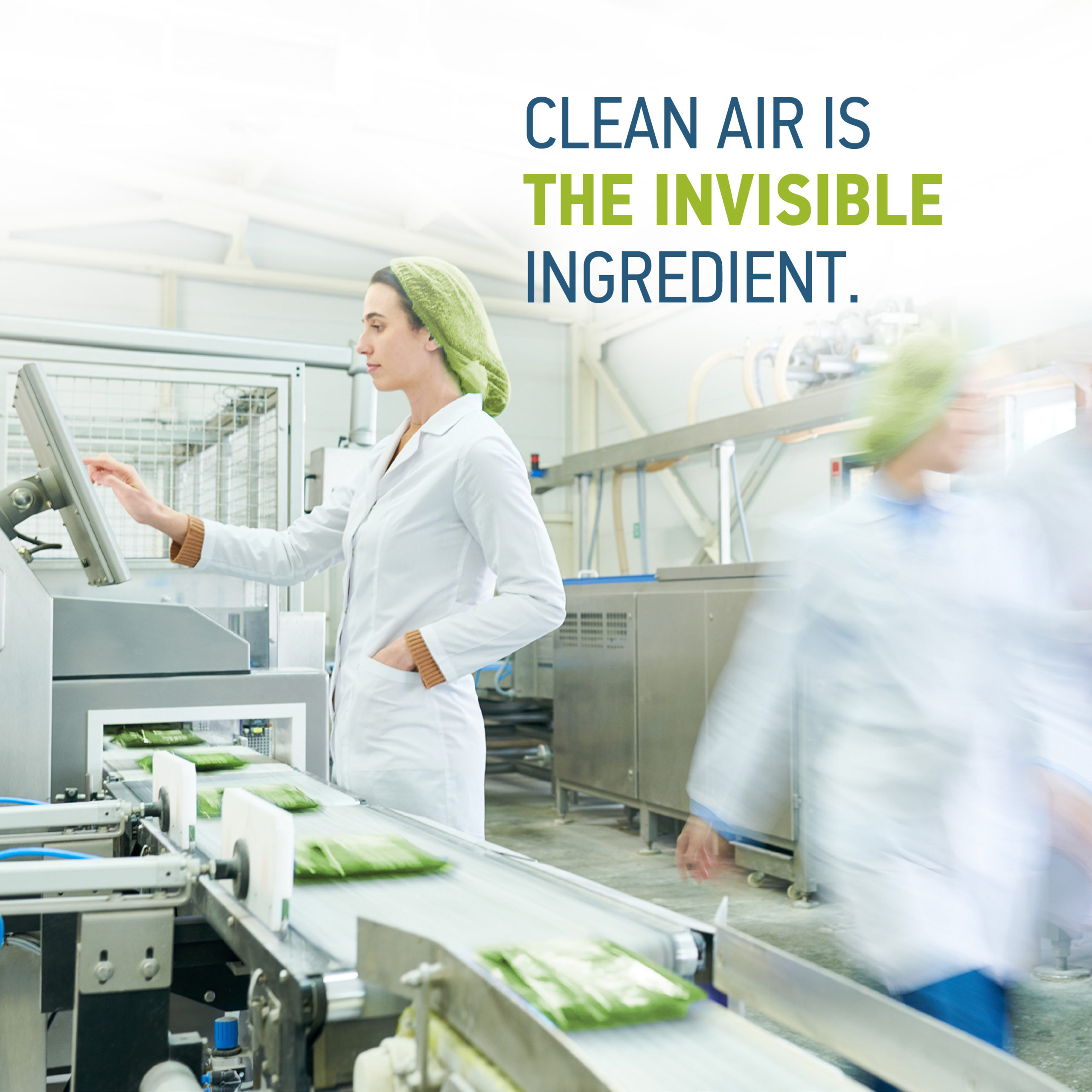
It is easy to take for granted everything that goes into critical items we consume, such as food and medicine. Yet, any contamination that endangers human life can have an equally dangerous effect on our products. The reliability and effectiveness of contamination control play a crucial role in health and safety. Learn about how the air plays an important part in protecting the food we eat and the medicine we take.
For decades, we have taken it for granted that water from the tap comes free of impurities. In the past few months after the COVID-19 pandemic outbreak, we have also transferred this expectation to the supply air indoors; the air must be hygienically perfect and meet comfort criteria. Ventilation systems and the air filters installed in them have a crucial role to play.
A basic requirement in the production of high-quality and sensitive products such as food, pharmaceuticals, microelectronic components or in research in medical, biological and environmental sciences is a high purity environment. Contamination of raw materials, finished products or production staff must be avoided at all times, as this can lead to massive consequences.
Many of us have experienced food spoiling within the intended shelf life despite intact packaging. Mostly we notice this in time before consumption and do not suffer any major harm. The cause is very often airborne contamination. If this happened, for example, in the filling of pharmaceuticals, in the -case scenario, seriously ill people would be injected with an impurity that would be life-threatening. Wherever contamination endangers human life or the quality of products and processes, the reliability and effectiveness of contamination control, therefore, play a crucial role. Minimising contamination is critical because it can become a health and safety issue.
For humans, breathing fresh outdoor air is an important aspect of vitality and health. However, in the production of medicine and active pharmaceutical ingredients, as well as in the food and beverage industry, the outside air quality is insufficient. It can become a serious trap. Without efficient air filtration systems, particulate, gaseous and microbial contaminants have potential contact with the product via the incoming supply air. If contaminants then enter the production stream, they can cause serious consequences – as described earlier. An essential element is therefore the purity, the ventilation adequate introduction of air into the production environment, and the correct selection of the processes and operating equipment necessary for manufacturing. Highly efficient air filtration, plays a central role in contamination control and helps to avoid harm to health, production downtime, product recalls, delisting from retailers and, of course, damage to the company’s image.
The purpose of HVAC systems is to create a hygienically perfect quality indoor air and a physiologically favourable indoor climate. They must therefore be planned, designed and operated in accordance with the state of the art practices and standards to ensure that they do not have a harmful effect on health or cause any discomfort, poor thermal comfort or unpleasant odours. Microorganisms must be prevented from multiplying in air handling systems. Therefore, the air-conducting areas of the system must be designed with materials that neither emit substances hazardous to health nor provide a breeding ground for microorganisms. In addition, it must be ensured that only system components are used that do not emit any substances, fibres or odours that are harmful to health into the air stream.
The objective of many standards, guidelines and quality standards is to ensure the safe and consistent production and control of food, pharmaceuticals and medical products. Depending on the product group or industry, various standards are used to define the required air quality within a production process. Examples include ISO 168901, EN 18222, ISO 146443, VDI 20834, VDI 60225, EN 167986 and EC 1935/20047.
In order to make the task of comparing air filters a little more transparent and thus easier, the Eurovent-certified air filter manufacturers introduced a uniform Europe-wide classification and quality monitoring system for fine dust filters in 2012 and are committed to publishing all the information that is important for purchasing. Eurovent is particularly dedicated to the issues of sustainability and energy consumption of air filters. Through a uniform classification system for energy consumption, consumers thus have an independent evaluation system for selecting filters that minimise the energy consumption of their air handling units. This enables the highest purity of supply air at optimised costs.
___________________________________________
[1] https://www.iso.org/standard/57864.html
[2] https://www.en-standard.eu/set-en-1822-and-en-iso-29463-standards-for-heigh-efficiency-air-filters-epa-hepa-and-ulpa/
[3] https://www.iso.org/standard/53394.html
[4] https://www.vdi.de/en/home/vdi-standards/details/vdi-2083-blatt-21-cleanroom-technology-cleanliness-of-medical-devices-in-the-manufacturing-process
[5] https://www.vdi.de/en/home/vdi-standards/details/vdi-6022-blatt-1-ventilation-and-indoor-air-quality-hygiene-requirements-for-ventilation-and-air-conditioning-systems-and-units-vdi-ventilation-code-of-practice-1
[6] https://www.en-standard.eu/din-en-16798-1-energy-performance-of-buildings-ventilation-for-buildings-part-1-indoor-environmental-input-parameters-for-design-and-assessment-of-energy-performance-of-buildings-addressing-indoor-air-quality-thermal-environment-lighting-and-acoustics-mod/
[7] https://eur-lex.europa.eu/legal-content/en/ALL/?uri=celex%3A32004R1935